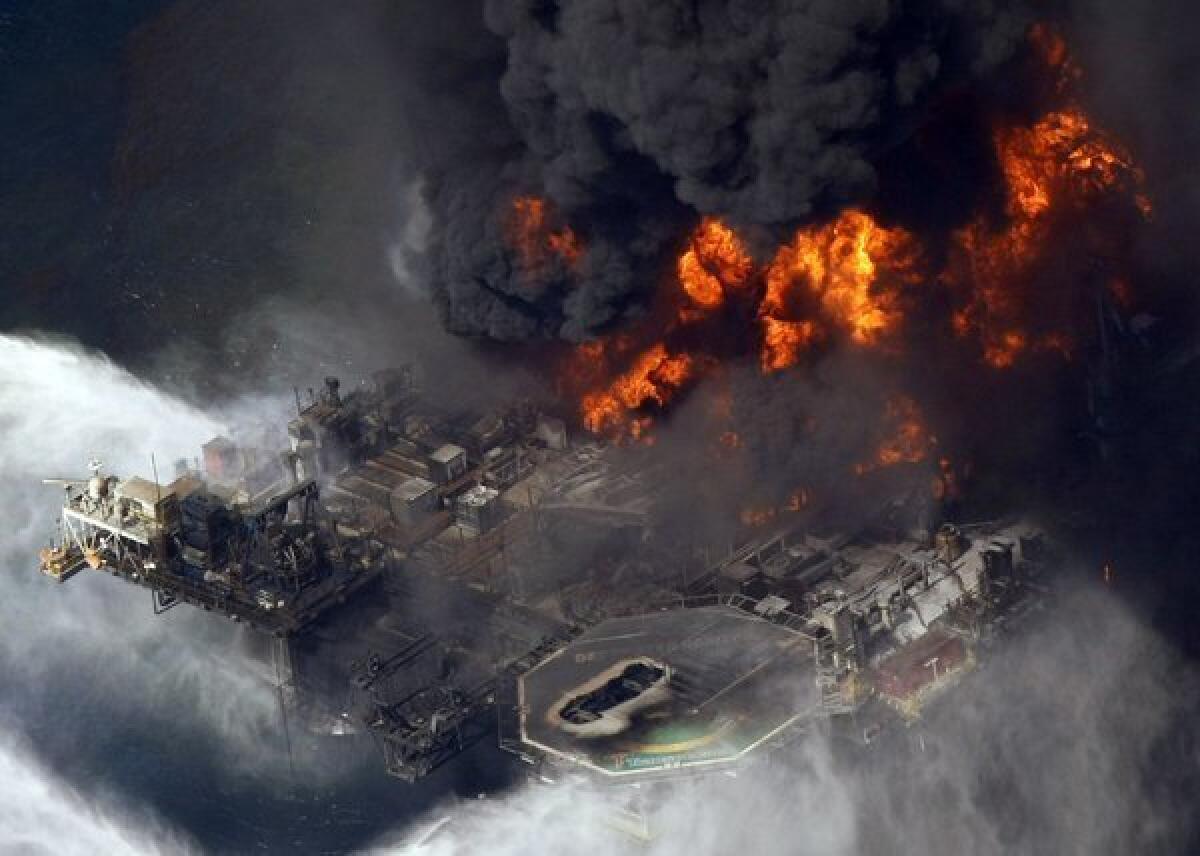Halliburton pleads guilty to destroying evidence in BP oil spill

WASHINGTON -- Oil-field services giant Halliburton has agreed to plead guilty to destroying evidence in connection with the 2010 Gulf of Mexico oil spill, the Justice Department announced Thursday.
Halliburton has been charged with one count of destruction of evidence in U.S. District Court in New Orleans.
Under a plea agreement that is subject to court approval, Halliburton agreed “to pay the maximum-available statutory fine, to be subject to three years of probation and to continue its cooperation in the government’s ongoing criminal investigation,” the Justice Department said.
PHOTOS: Gulf oil spill aftermath
The April 2010 explosion and sinking of the Deepwater Horizon drilling rig was the largest offshore oil disaster in U.S. history, killing 11 workers and spewing nearly 5 million barrels of oil into the gulf. The Macondo well was owned by a consortium of energy companies, led by BP. Transocean owned the drilling rig that BP was leasing for the venture. Halliburton was contracted by BP to do the cement work on the well.
The plea agreement was the third that the Justice Department has obtained in the criminal investigation of the disaster. Transocean agreed to pay $400 million as part of its criminal plea, and BP, $4 billion. A civil suit against the three companies brought by the Justice Department and others is continuing.
The Halliburton plea involves the destruction of results of internal tests the company conducted after the drilling rig sank, the Justice Department said. The tests were designed to determine the soundness of advice Halliburton gave to BP before the disaster. Halliburton had recommended that BP use 21 centralizers, which keep the metal casing in the well centered and away from the surrounding rock wall. BP opted to use six centralizers instead.
Separately in May and in June, Halliburton tested through computer modeling whether its advice to use 21 centralizers would have improved the stability of the well.
But both tests showed no difference between the use of six centralizers and 21. The company ordered the results destroyed.
The Justice Department said, “In agreeing to plead guilty, Halliburton has accepted criminal responsibility for destroying the aforementioned evidence.”
ALSO:
O.J. Simpson asks for leniency at parole hearing
Cleveland kidnap suspect may avoid death in plea deal
How a one-of-a-crowd tabloid site became Anthony Weiner’s problem
More to Read
Sign up for Essential California
The most important California stories and recommendations in your inbox every morning.
You may occasionally receive promotional content from the Los Angeles Times.











